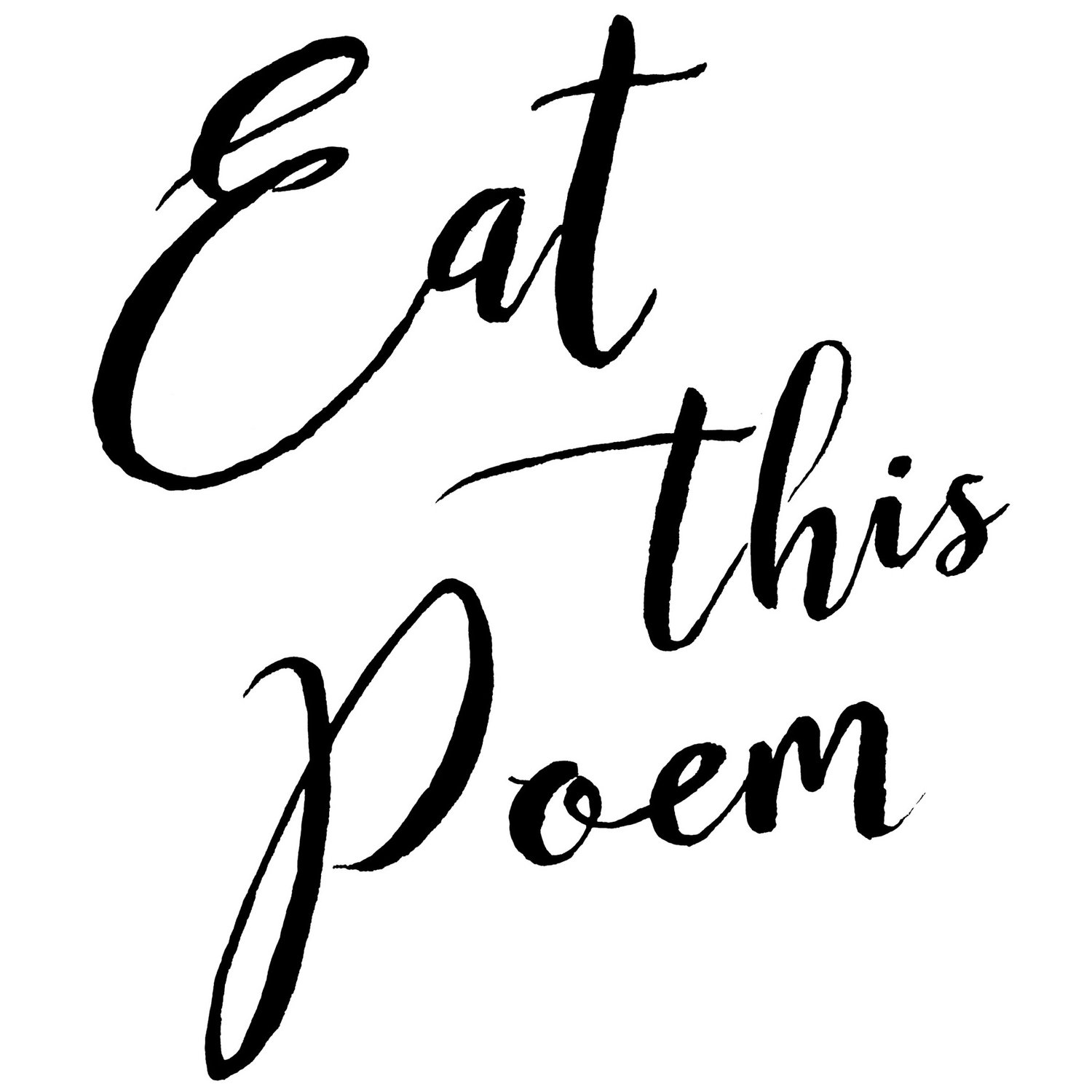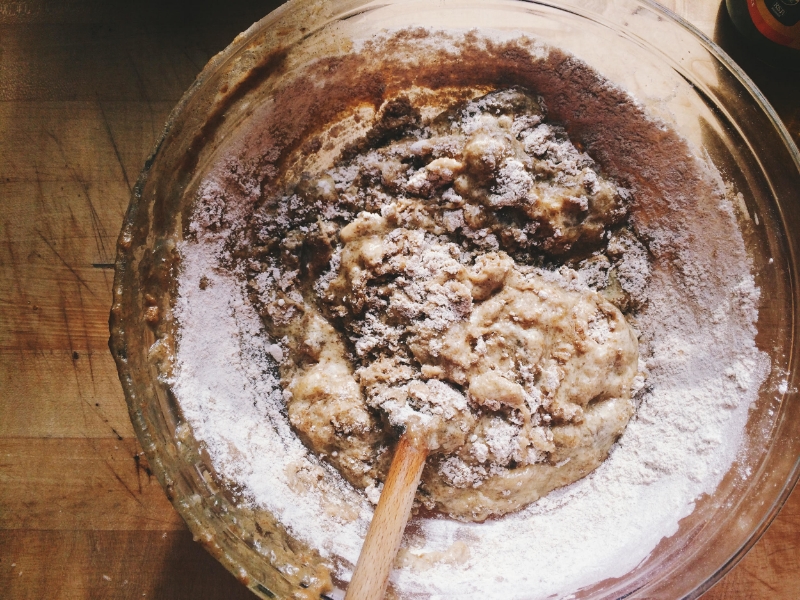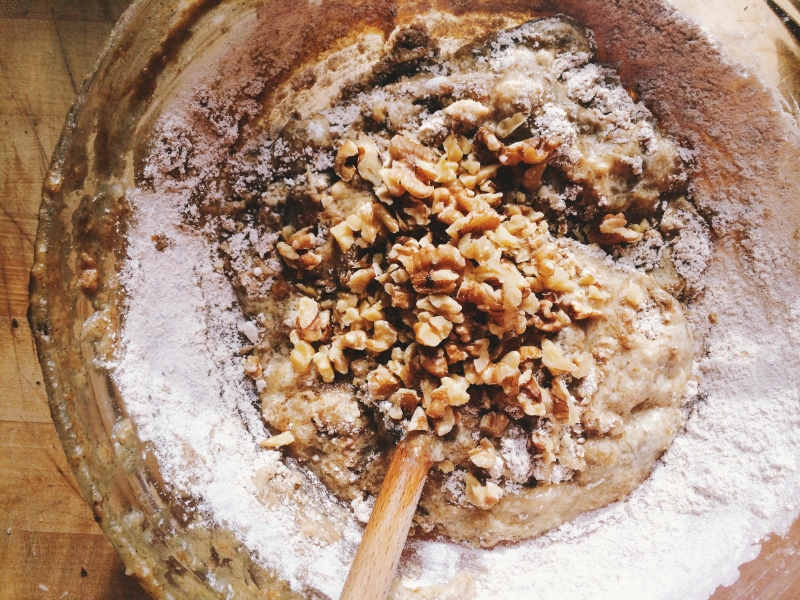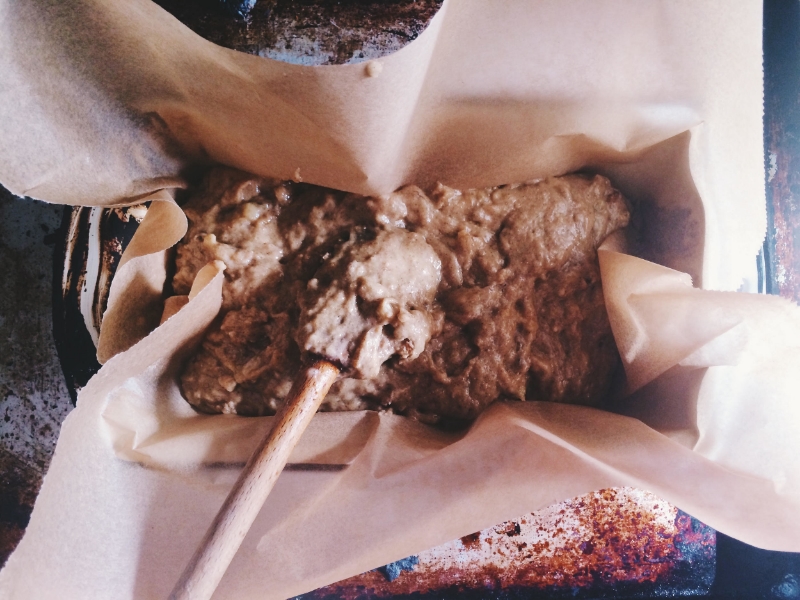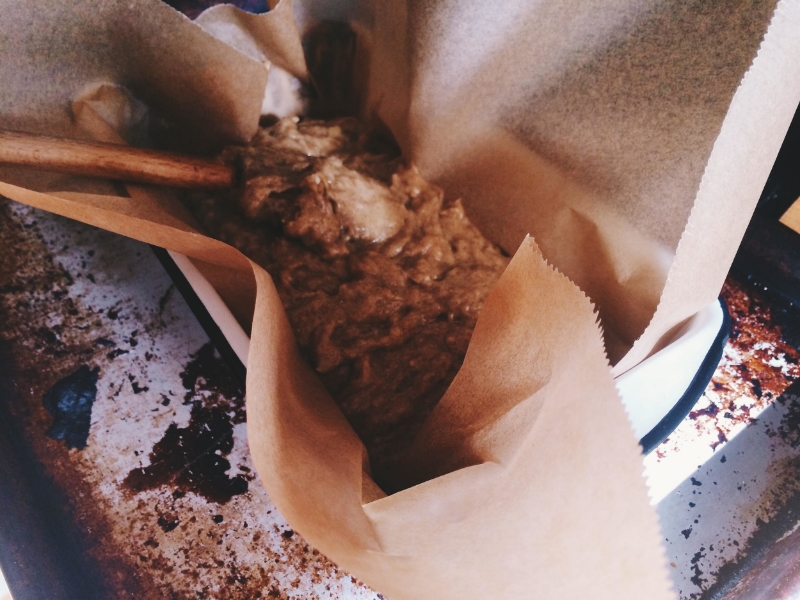As we've discussed, the last weeks of pregnancy require you to wait. And rest. (And hopefully get massages, read books, and put your feet up while watching movies and drinking iced tea.) I've been enjoying it immensely.
Naturally, I haven't been able to keep completely still, although I have found myself limiting each day's expectations. I might only have energy for one or two activities. One load of laundry and one yoga class, perhaps, or one movie and one pedicure, for example. If I have more or less energy, I accept that, too.
Most recently, because I had the energy and ingredients and was needing to make room in the freezer for food to sustain us in the weeks after baby arrives, I made three loaves of banana bread.
I've been hoarding bags of peeled bananas in my freezer for the past several months. Maybe hoarding is the wrong word. Forgetting is more like it. These bananas never made it into smoothies or on top of pancakes, and the only way to save them was to peel their black speckled skins, place them inside a bag, and wait for an opportunity. Between several different bags, I discovered about thirteen bananas.
My afternoon was off to a tremendous start when I forgot to add baking soda to the first batch. I realized my error two minutes into baking, quickly pulled the pan from the oven, haphazardly poured the batter into a bowl, and stirred in the leavening agent. Then came the task of gracefully adding the batter back to the smeared pan and straightening the parchment paper as much as I could. It was the worst loaf of the three, as I'm sure you can imagine.
Luckily, the final two loaves were perfection. Nutty from brown butter and a combination of sugars, somewhat wholesome from a variety of whole grain flours, and moist from plenty of bananas and yogurt. Even though the sad first loaf didn't rise as much as the other two, I still couldn't wait for it to cool before cutting a thick slice off the end and slathering it with currant jam.
I tried to eat slowly, hoping that concentrating on a new poem might help, and it did, briefly. You might want to read this one twice over, as I did, because the descriptions are so beautiful.
Banana Trees
They are tall herbs, really, not trees,
though they can shoot up thirty feet
if all goes well for them. Cut in cross
section they look like gigantic onions,
multi-layered mysteries with ghostly hearts.
Their leaves are made to be broken by the wind,
if wind there be, but the crosswise tears
they are built to expect do them no harm.
Around the steady staff of the leafstalk
the broken fronds flap in the breeze
like brief forgotten flags, but these
tattered, green, photosynthetic machines
know how to grasp with their broken fingers
the gold coins of light that give open air
its shine. In hot, dry weather the fingers
fold down to touch on each side--
a kind of prayer to clasp what damp they can
against the too much light.
from “A Field Guide to the Wildlife of Suburban O’ahu,” Time Being Books, 2006
I love when a poem doesn't ask too much of you, except to marvel a little. This poem does exactly that. Banana trees might not be something we consider very often, if ever. But for two minutes, we stand at the base and look up, mesmerized by "multi-layered mysteries with ghostly hearts."
We feel the wind on our skin, and really listen to it. We offer up a little gratitude to the beauty found in a single fruit. The poem ends with an offering, not only to the banana tree itself for sustaining "gold coins of light," but an offering to the reader in the form of remembrance, because now you might never be able to peel back the skin of a banana again without thinking of the act as a kind of of prayer, and thinking of the banana tree as a steady force swaying in the breeze, able to sustain the weight and provide sustenance against the elements.
It's just beautiful, really, to the point that a humble loaf of banana bread almost feels inadequate. But cooking is about intention, no? Approaching the ingredients, the method, the baking, with care and reverence and enthusiasm. If we arrive with these traits, whatever we make in our kitchens will rise up to be worthy.
NUTTY WHOLE GRAIN BANANA BREAD
I've adapted this recipe liberally from Molly Wizenberg via Luisa Weiss. I've never actually made Molly's ginger and chocolate version, but instead have used the wet and dry ingredients as a guide to develop my own version.
I use three different flours and three different sugars because I tried it one recent afternoon and loved the results. But if you'd rather not, just know you need 2 cups of flour and 3/4 cup sugar, and define those how you will. I also tend to believe that if you're planning to melt butter for baking, browning it is always a good decision.
3 tablespoons unsalted butter
1 cup whole wheat flour
1/2 cup spelt flour
1/2 cup buckwheat flour
1/4 cup turbinado sugar
1/4 cup granulated sugar
1/4 cup brown sugar
1/2 teaspoon salt
3/4 teaspoon baking soda
3 ripe bananas
2 eggs
1/4 cup plain, whole milk yogurt
3 tablespoons coconut oil, melted
1 teaspoon vanilla
1 cup chopped walnuts
Preheat oven to 350 degrees. Grease a loaf pan and/or line it with parchment paper. (As you can see from my rustic photos, I didn't take the time to perfectly measure my parchment.)
Melt the butter over medium heat and cook until it begins to brown and smells nutty. Remove from heat and let cool while you prepare the remaining ingredients.
In a large bowl, whisk together the dry ingredients. In a medium bowl, mash the bananas, then add the eggs, yogurt, coconut oil and vanilla. Whisk with a fork until well combined.
Add the wet ingredients into the dry and stir with a wooden spoon. Slowly drizzle in the melted butter and add the walnuts. Continue stirring until no traces of flour remain; do not overmix.
Pour into the prepared pan and bake for 50 minutes.
